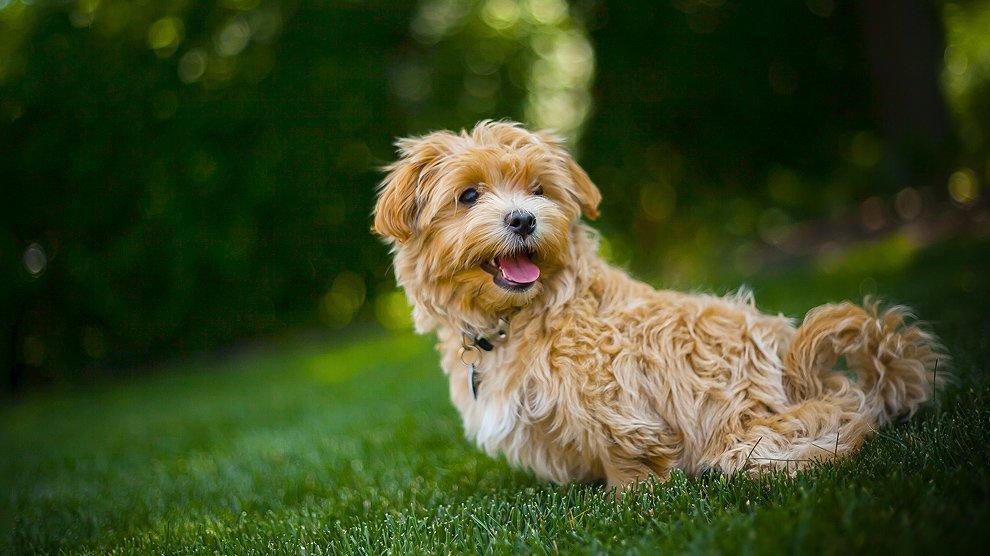Raising a puppy is both challenging and rewarding. It's a time of change where you will get used to having a young dog while it gets used to living with you. Keeping an eye on any changes that your puppy undergoes during its first year can ensure a long and healthy life. Not only will catching signs early save your dog pain, it will also save you time, stress, and money. Today, we're going into ten signs that your puppy is happy so that you can rest assured everything is on-track like it should be.
1. They Are Eating Well
At about four weeks old, the breeder or rescue that handled your puppy should have started to convert them to dry kibble. At about eight weeks old, they should have been on kibble completely and released to you for life in their new home. It's at this time that you should see your puppy start to eat healthily.

As you get to know your puppy, you will realize what is normal for them. If they are big eaters, just watch their weight. If they don't want a lot, make sure they are getting what they need. A healthy puppy eats when hungry (and sometimes a little more) so if they stop eating altogether then you know something is wrong.
2. They Are Running and Playing
If you're out on walks and your puppy is running and playing like normal, you should be happy! Puppies, depending on the breed are very active and need to get a lot of energy out. Although excessive playing can cause soreness, an active puppy means a healthy puppy. In general, when your young dog is hurt, they will become more sedentary. This is true for all breeds and types of animals no matter the age.
3. Puppy Eyes
If you've ever owned a dog before, you know what "puppy dog eyes" are. Happy dogs have relaxed eyes that look soft and blink a lot. On the other hand, unhappy dogs will have a hard gaze and narrowed eyes. If you are looking for a way to make tell if your dog is happy, then simply check their eyes.
5. Relaxed Ears
Along the same lines as the eyes, dogs with relaxed ears are happy. Depending on what your dog looks like, this could be flopped to the side, or crooked up. If you see dogs holding their ears pinned back, it will generally mean that they are feeling or aggressive.
Make sure that you keep a happy environment for your pets by keeping overly loud noises to a minimum. , and dogs, in general, have a better sense of hearing than we do which can cause them to be frightened by loud noises that might not scare us.
6. Moving Tail
Again, this sign of happiness could be breed. Happy dogs will wag their tail in such a way that their whole butt begins to shake. On the other hand, a dog that wags it's tail stiffly may be keeping a look out at a new situation and not completely relaxed.
7. Non-Destructive
Contrary to what some dog owners may think, dogs don't destroy stuff when they're happy. A dog that chews up your shoe and digs in the trash is often unhappy or bored. If you have a happy puppy, or even grown dog, that is acting naughty or chewing excessively, then chances are you have a bored dog on your hands.
To resolve this, make sure that your dog is going outside enough and getting enough physical activity in. Ensure that they are happy inside by giving them safe toys to play with and showing them attention within the house.
8. Happy Barking
Though some owners may hate barking, it isn't always a bad thing! Barking can actually be a sign that your dog is happy and ready to play. This is more breed dependent and should always be looked at in contact with the situation at hand.
In general, a happy dog bark is a higher pitch and shorter than a normal dog's bark. It's often found in puppies that can't contain their excitement at the prospect of playing or going on a walk. Though there are ways to help a dog curb it's barking, punishing a happy dog for barking should be avoided!
9. Leaning
Some dogs are leaners. That means they will put most or all of their weight on you if they like you. On the other hand, most dogs will at least lean into a pet if they are happy with the contact. Puppies should be friendly and curious, leaning in and enjoying contact with their owner. If your puppy is shy or came from a rescue, they could stay out of reach or even walk away. While this shows they aren't comfortable with you, that's ok. Keep working on making your dog comfortable and one day you will see success.
10. Booty in the Sky
If you've ever done Yoga, then you know what the Downward Dog is. This playbow is a great sign coming from a dog of any age. In human terms, they are shouting, "play with me! Love me! Let's have fun!" at the top of their lungs. It's often accompanied by happy barking or even tail wagging for extra happy puppies.
Overall, puppies are happy creatures. Unless your dogs' behavior changes noticeably for the worse, chances are you are in the clear. Keep a look out for happy barking, relaxed facial features, healthy eating, and playful gestures to better know what your dog is feeling. By ensuring that your home is calm and inviting, you can incite these feelings without the worry of stressing your new dog out.

